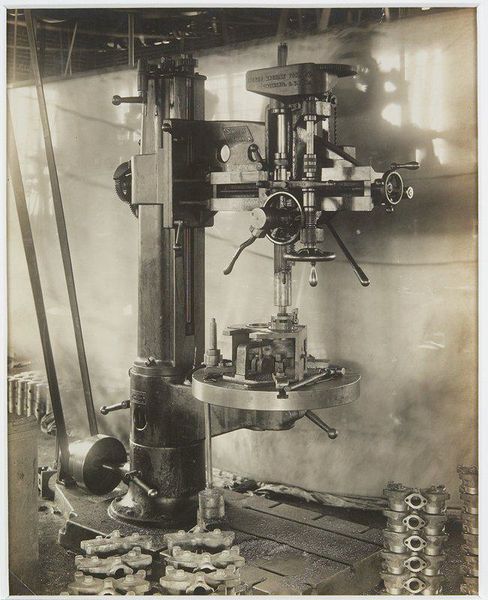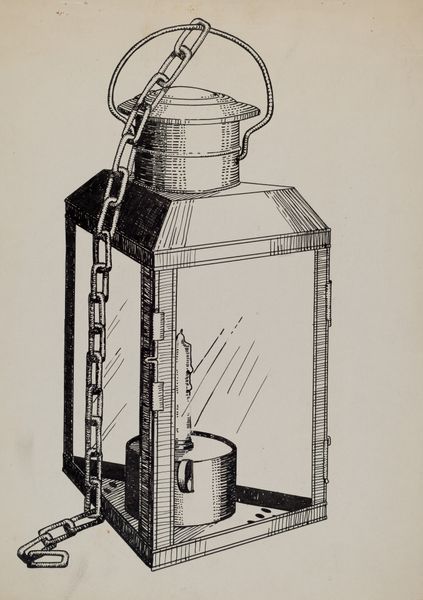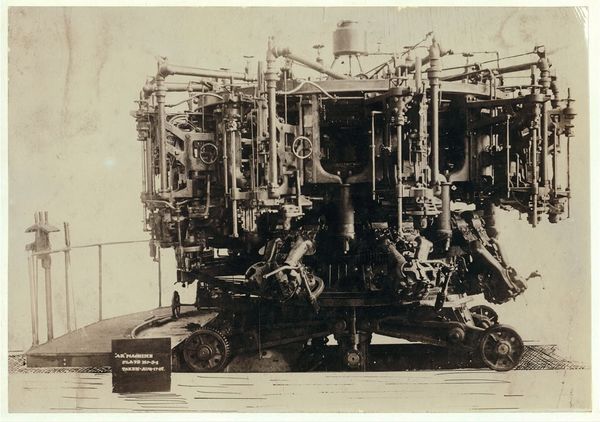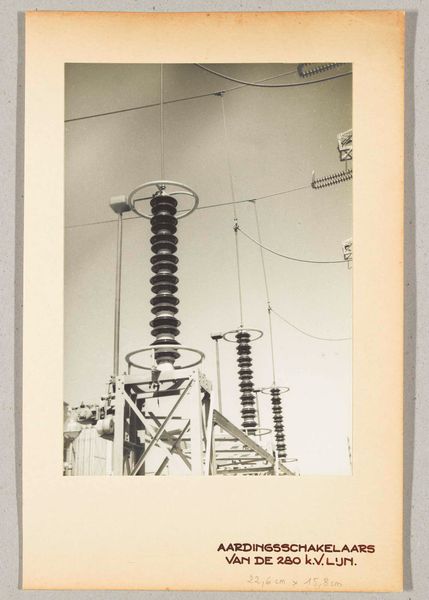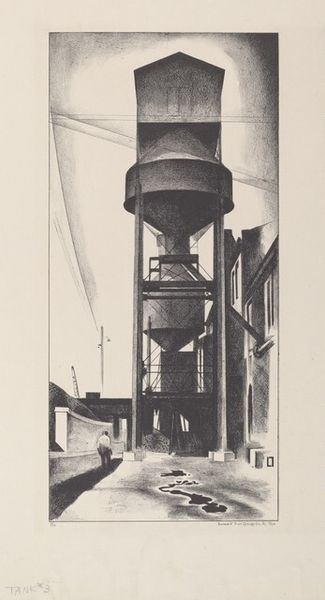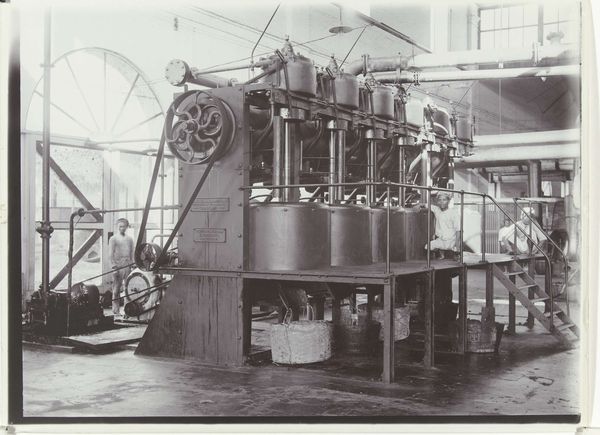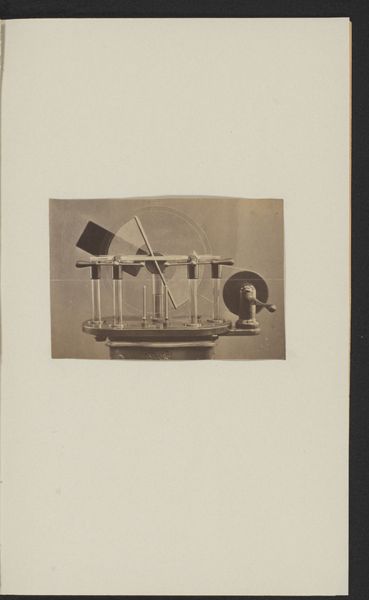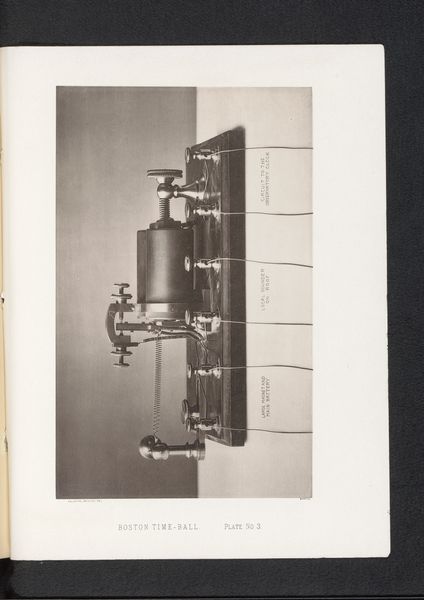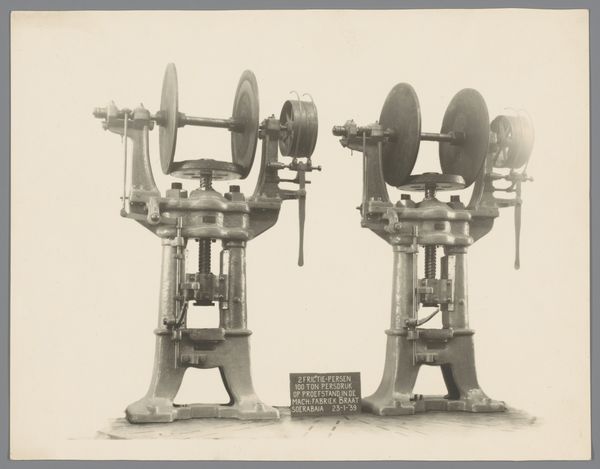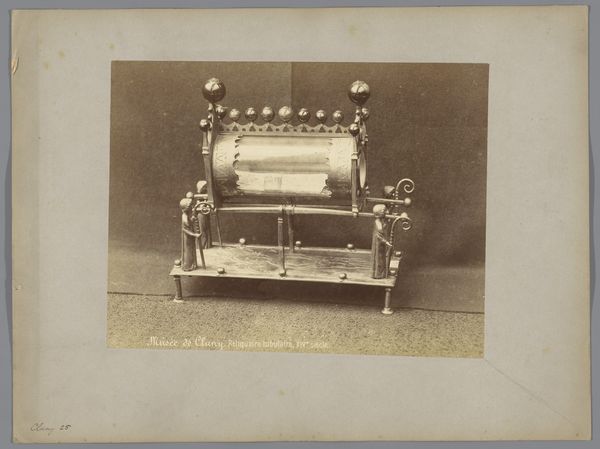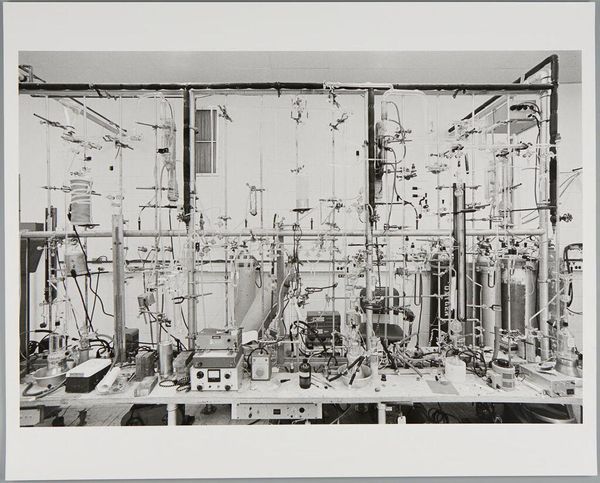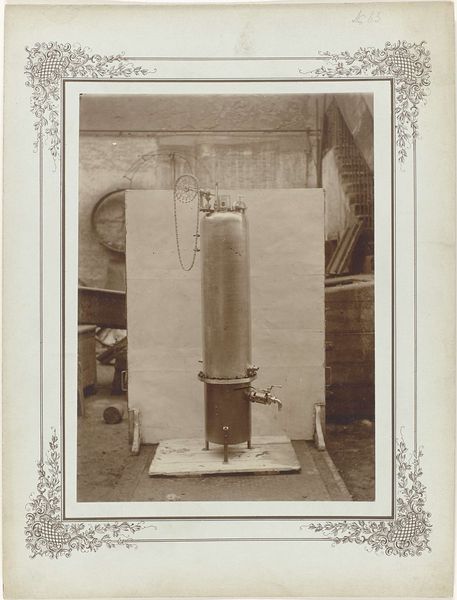
Weefgetouw van Barlow op de Great Exhibition of the Works of Industry of All Nations van 1851 in het Crystal Palace in Londen 1851
0:00
0:00
print, photography
#
still-life-photography
# print
#
sculpture
#
photography
#
ceramic
#
realism
Dimensions: height 207 mm, width 161 mm
Copyright: Rijks Museum: Open Domain
Curator: This photograph from 1851 depicts Barlow's loom at the Great Exhibition in London’s Crystal Palace, a structure itself representative of industrial progress. It's credited to C.M. Ferrier and F. von Martens. Editor: My initial reaction is one of awe at its sheer mechanics. The loom’s structure looks both complex and delicate; almost skeletal given the stark contrast against the backdrop. The lines draw my eye upwards. Curator: It's compelling how they documented this machine at a time rife with social upheaval. Industrialisation shifted power dynamics and irrevocably changed labour practices, and I think this photograph represents that complicated intersection. What can this symbol of industry reveal about the lives transformed by factories? Editor: Absolutely, it symbolizes that transition. In a visual language, we can unpack how the individual threads coming together represent both individual human labor converging and contributing to the grand tapestry of industrial output. Each thread reliant on and contributing to the next. Curator: That's insightful. Thinking about this loom within the framework of, say, feminist economics allows us to view it as both a site of oppression – cheap female labor driving textile production – and of potential empowerment as women entered the public workforce. Its presence in an exhibition also denotes a certain value conferred upon industrial advancement and trade, yet many would argue that such progress was far from equitable. Editor: Consider the image as an attempt to mythologize the loom itself; the delicate strands descending appear to emanate almost mystically downwards into a machine of transformation. And I suppose the symmetry is important too; creating that symbolic visual stability perhaps masking the unstable socio-economic reality you pointed out. Curator: Precisely. It’s the photographic construction of a specific narrative about industry and nationhood. It highlights how crucial it is that we continue to ask critical questions about how technology and gender, race, and class intersect. Editor: Yes, seeing this loom as a central visual element speaks to the complicated symbols of the time. A great reminder of the importance of carefully examining the impact of technologies that shape both our lives and perspectives.
Comments
No comments
Be the first to comment and join the conversation on the ultimate creative platform.
